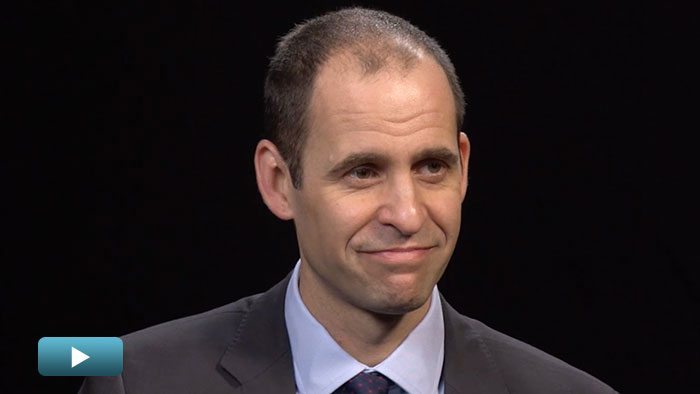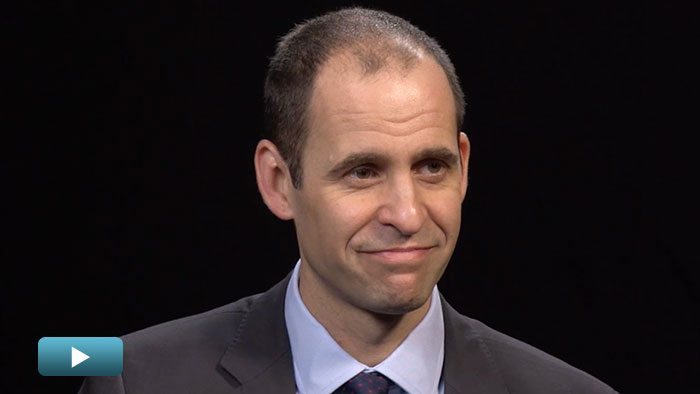Risk, Real Estate, and Capital Flows
Unprecedented capital flows into commercial real estate globally are changing the face of the investment landscape. But what’s the true impact of increased capital flow into the asset class, and how are investors and managers underwriting the risks involved? ![]() Commercial real estate is undergoing a paradigm shift, thanks to unprecedented capital flows targeting the asset class.
Commercial real estate is undergoing a paradigm shift, thanks to unprecedented capital flows targeting the asset class.
Over the past five years, more than $823B of capital has been invested in cross-border deals alone, with a third of those transactions made in the past 12 months, according to data provider Real Capital Analytics. That activity, together with increased domestic capital flows, is undeniably changing the face of real estate investment today, driving increased competition for assets and helping push prices in many core and secondary markets to post-crisis, and even pre-crisis, highs.

But will this capital-driven paradigm shift be a permanent change for real estate? Are the capital flows being seen in global property markets here for the long haul, or will new capital sources turn on their heels once interest rates start rising and yields improve in alternative asset classes?
For both Eric Adler, chief executive officer of Prudential Real Estate Investors (PREI), and Sean Bannon, managing director and head of U.S. real estate at Zurich Alternative Asset Management, the tsunami of capital—as one institutional investor has called it—targeting commercial real estate is here to stay for the long term.
“I think as cycles move along, you always see this wave of capital coming in and out of real estate. But this time it is a bit different,” says Adler, noting that he’s never seen the volume of “hot money,” including private equity and hedge fund capital, that is currently targeting real estate during past cycles.
For Adler, though, the biggest change has come from sovereign wealth funds, much of which he believes is here to stay. “These are long-term investors. They do not need leverage…and they don’t necessarily think in terms of pure IRRs. They’re ready to have very long hold periods, they’re very cash-flow orientated, and they’re ready to work hard at an asset to get that cash flow built up over time to act as a real inflation hedge for them.”

It’s a sentiment echoed by Bannon, who leads Zurich’s $2.5B U.S. real estate program. “There’s every reason to believe that it is more permanent capital. A lot of the new entrants aren’t just sending money, they’re sending people over. They’re hiring people. They’re building out infrastructure, which would suggest that they’re committed to the space.”
Such permanence of new capital in commercial real estate globally has major implications for investors and managers alike, not least when it comes to competition for assets and valuations.
As a direct investor targeting major U.S. markets and the primary food groups, Bannon admits it can be hard for 20-year professionals in the industry to “get their mind around the yields…and some of the assumptions you have to make those work.” But he stresses core real estate—the primary target of new capital sources—continues to offer “very, very attractive risk-adjusted returns,” not least relative to alternative asset class returns, the 10-year U.S. Treasury, and corporate spreads.
“Obviously there is a [cap rate] below which you would not go or you’d migrate into another asset class,” says Bannon. “But I’m not sure that we’ve found that point, and I think that other core buyers in major markets are also struggling with that question. It’s really a function of the rent growth expectations, the earnings growth, and the appreciation potential, which have been very, very good in major markets recently.”
Adler says it can seem challenging, competing against today’s wall of capital, but insists diversification is key to any success. “I see opportunities and I see challenges everywhere,” he says, noting that various strategies and asset classes look attractive at different times in their respective cycles, allowing you to “walk away” from some markets when they become too frothy and jump into others when the opportunities present themselves. “If you’re very mono-product, you live and die by that product,” he says. “It takes incredible discipline to say that it’s overpriced and you’re going to walk away. The way you do it is by being diversified.”
But even diversification requires a disciplined approach, Adler stresses. He adds that in Europe and Asia, PREI is focused on just five or six key markets within each region, representing “a big change for us from the last cycle. If you’re really going to be a serious player, you have to decide where you’re going to bet enough to be able to build sustainable local teams, so you have to have a reduced amount of cities.” Another factor is the illiquidity of real estate and the need to ensure that if a market turns, markets and asset classes have viable exit liquidity options, he says.
But it is risk—and the adding of risk to strategies and portfolios—that remains a key focus for all investors and managers globally in 2015 and beyond.
Zurich Alternative expects to expand its market focus in the U.S. over the near term, thanks in part to increased staffing levels. However, Bannon stresses how vital it is to get compensated for taking additional risk and for investors to fully understand the risks involved in strategies. There are “very, very good opportunities on offer in some of the secondary markets,” Bannon says, but “it’s making sure that we understand where that perception of risk is real risk, and that those risks are adequately compensated.”
Adler agrees the focus on risk is critical today as managers enter the next real estate downturn. “The players who treated their investors right, did the right things to reduce risk coming into that downturn, are the big winners of the next cycle,” he says.
For now, Adler agrees the U.S. and Europe are good places to take added risk, thanks to improving fundamentals and historically low supply levels. Within the next few years, though, it could be time to start reducing risk in the U.S. and “really sticking to some of the more gateway markets.” In Europe, “there’s more room to run…which is a good thing for long-term investors that want to buy assets over a period of time,” while in Asia today it’s time to be careful, but also for “preparing yourself to take bigger risks again a few years from now”.


